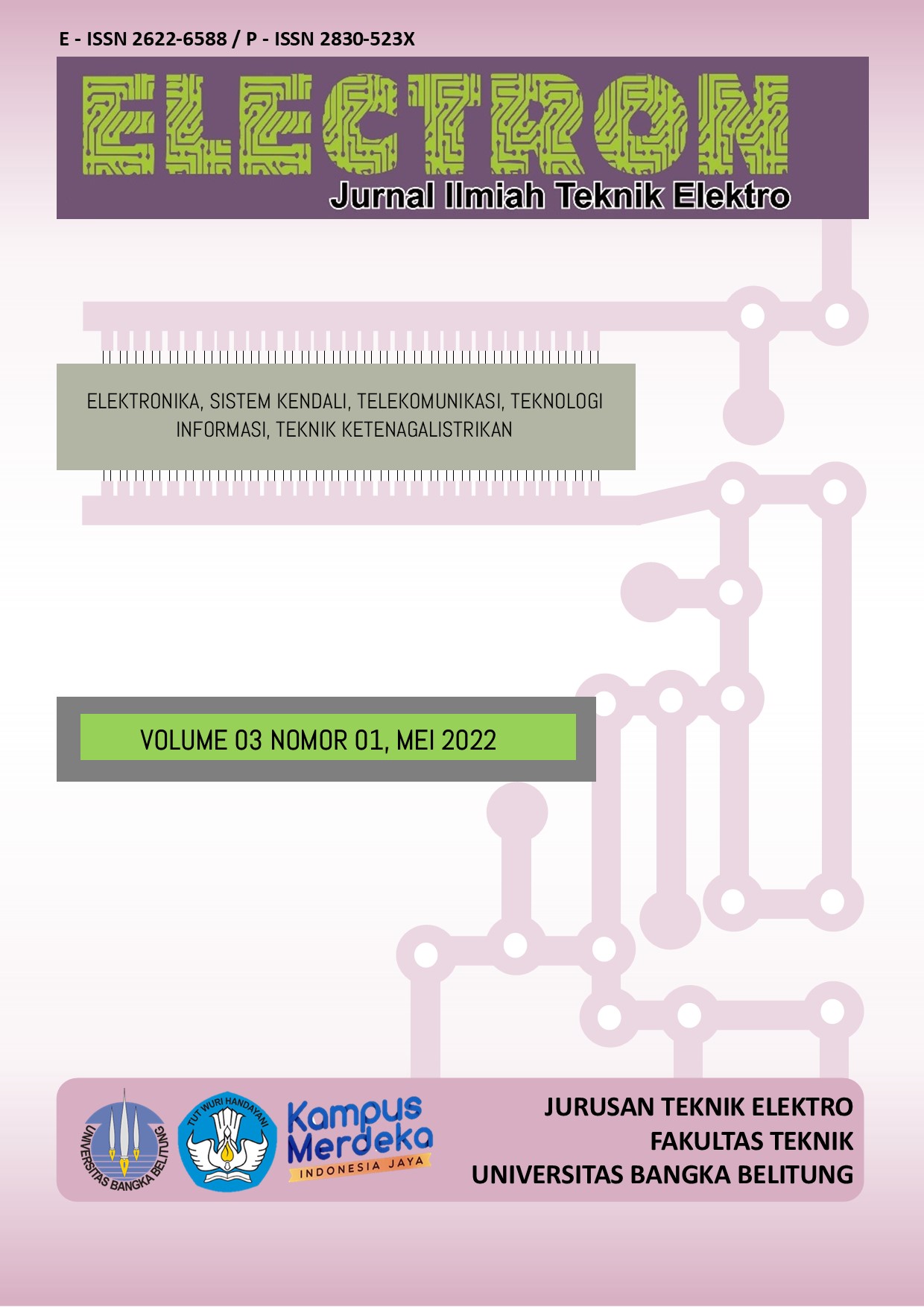Perancangan Monitoring Suhu dan Kelembaban pada Kumbung Jamur Berbasis Internet of Things
DOI:
https://doi.org/10.33019/electron.v3i1.14Kata Kunci:
DHT22 Sensor, Internet of Things (IoT), jamur, ESP8266Abstrak
Budidaya jamur tiram sangat populer di kalangan masyarakat pedesaan maupun perkotaan, baik dalam skala kecil, menengah maupun industri. Budidaya jamur tiram memerlukan pengontrolan suhu dan kelembaban pada kumbung jamur untuk mendapatkan pertumbuhan badan jamur yang optimal. Pada fase pembentukan tubuh buah memerlukan suhu antara 27⁰C-29⁰C dengan kelembapan antara 70%RH-90%RH. Seiring pesatnya perkembangan teknologi saat ini pemantauan dan pengontrolan suhu dan kelembapan dapat dilakukan dengan cara otomatis secara jarak jauh menggunakan NodeMCU ESP8266 dengan berbasis Internet of Things. Pengukuran suhu dan kelembaban menggunakan sensor DHT22. Akuisisi data pengukuran dikirimkan ke platform ANTARES menggunakan ESP8266 yang terhubung ke internet. Pemantauan suhu dan kelembaban dapat dilihat pada ANTARES. Pengontrolan suhu dan kelembaban menggunakan pompa air DC 12 Volt. Ketika hasil pengukuran melebihi range suhu yang diinginkan dan kelembaban kurang dari range yang diinginkan maka pompa akan menyala untuk menstabilkan suhu dan kelembaban kembali. Dari hasil pengujian alat didapatkan hasil pengukuran yang sesuai dan pompa juga menyala apabila suhu dan kelembaban tidak sesuai yang diinginkan.Dari hasil pengujian ini menunjukkan sistem telah berjalan sesuai rancangan.















